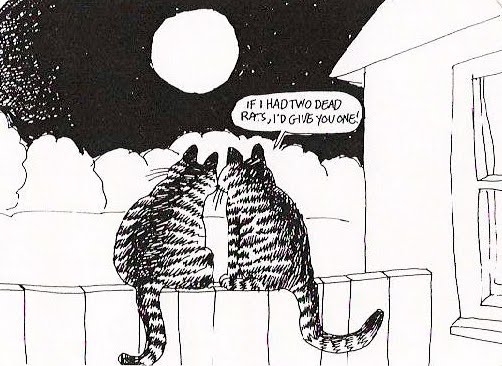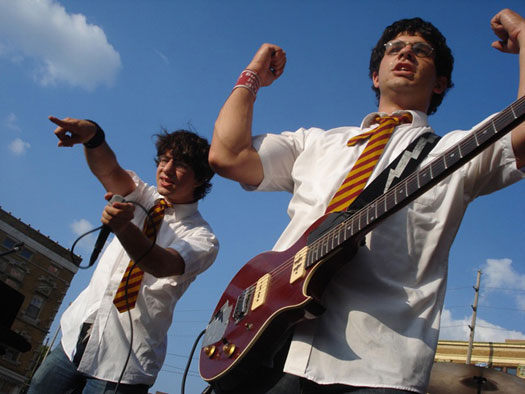The Multiplicity and Diversity of Fandom: An Interview with Fansplaining's Flourish Klink and Elizabeth Minkel (Part Three)
/You have argued against assuming that all forms of fan culture are transgressive or resistance, a position with which I strongly agree. The status of slash as a political expression has shifted as GLBT representations have become more mainstream and commonplace. Why do you think this transgressive reading of fandom has been so persistent? What do you see as the investments within fandom in seeing themselves in these terms?
Elizabeth: I have a lot of thoughts about this—I’ve written about it and we’ve had entire episodes on the topic. One thing I’d say from the outset is while I don’t believe that male/male slash is even remotely the act of transgression it once was, it’s undeniable that amongst the types of media that transformative fandom tends to gravitate towards, canonical queerness and queer relationships are still a rarity. Fans are queering texts in genres that still fail to deliver significant queer representation; that makes this conversation even more complicated. And from my vantage watching the way the media, dominated by straight men, talks about and engages with fans, there is certainly still an element of bafflement and even derision about slash. “Why slash?” A question that will not die!
That being said, in 2017, I think the way you characterize our stance on slash as political or transgressive is correct. I was chatting about this with Anne Jamison oh, maybe 18 months ago—some of our conversation made it into this article—and she had a theory that really resonated with me. Acafans talk about affect all the time, but fans rarely do, even using simpler language; how often do you see people arguing on behalf of their favorite show or character or ship by saying, “It just brings me a lot of pleasure.” If the act of shipping and romantic desires around a text is largely coded as female, there might be some subconscious internalized misogyny at work here; I ship these guys because it is Serious and Important and Vital for Gay Rights, not because it brings me pleasure, because my (female) pleasure is frivolous and foolish.
Flourish: I think you’re absolutely right, and I also think that the idea that your pleasure might be also serious and important is heady stuff to lots of people! It marches well with sex-positive feminism, for example. I think that it’s easy to think of it as—wow, I can have my cake and eat it too!
And you can have your cake and eat it too; it’s not wrong to say that slash can be important, serious expression as well as romantic, sexy, and/or fun reading. But that can become an armor against critique, against gay men saying “this seems like you’re fetishizing gay dudes,” against people pointing out that slash sometimes writes women out of stories entirely, et cetera. I think that that armor, that method of defending yourself against critique, is very important to some people. Humans find it hard to hold two or three ideas in their head at once: Slash is important in creating queer representation; it’s fun and pleasurable for many people and that’s important too; but slash can sometimes be regressive, sexist, or fetishizing.
Elizabeth: And I think that the limits of the “progressiveness” of slash shipping patterns also belies how flimsy the “it’s politically important” argument is to both of us. Rukmini Pande, a scholar who’s been on the podcast twice now, is the person who really clarified this for me: she talked about how slash so often means only specific sorts of bodies: white, first and foremost, but also cisgender, able-bodied, etc. Sometimes fandom seems to go out of its way to seek out white men to slash, stepping around canonical characters of color and thrusting background white dudes, especially ones who look and act certain ways, to the forefront of fanworks. It’s systemic, and it’s pervasive. And I think it’s impossible to have a conversation about queer fanworks without talking about it.
You have consistently brought in historical perspectives about fandom into the program. Why should fans care about the history of fandom? What have been the most interesting insights you've discovered along the way?
Flourish: To me, the history of fandom is most interesting where it helps us think about our fandom today. I’m interested in the way that supporters of the Blues in Byzantine chariot racing rioted, but the reason I’m interested is mostly that football fans riot today. And that’s not to say that there’s any sort of coherent lineage between chariot racing and Manchester United. It’s to say that humans are humans, and have always been humans. By seeing the patterns people fall into, we can learn something about ourselves, and about our fandoms.
At times, I’ve thought of fandom history as a way to establish a lineage or a hierarchy of authority. This is a pretty common way that people think about fandom history—go on Tumblr and search for “fandom grandma” or “foremothers of fandom” or something like that and you’ll see an infinite number of people over the age of 40 holding forth on how Kids Today Just Don’t Remember How Hard It Was When We Had To Mimeo Our Zines And Pay For Shipping Both Ways, And Mimeo Fades, Dagnabbit. There’s an implicit plea for attention, often: “this stuff is important, so lend me your ears (and don’t listen to those newbies, they don’t know shit from shinola).” Sometimes it seems like people are upset that fandom has moved on from their favorite sites, zines, or fannish practices, so they’ve turned to cataloging what it was like “in their day” and insisting that that’s really important. And sometimes I’ve fallen into this trap and claimed authority just because I’ve been in fandom longer than others. (Whoops.)
Yet I do think that fandom history can be really important for fans today, especially fans who feel like fandom is shameful. Lots of fans still feel that way, and feel very isolated, believing fannish behaviors to be some kind of weird, avant-garde thing that’s only come to be with the advent of Tumblr or the internet. They don’t need to feel that way, because people have been behaving like fans forever, long before we had the word “fan.” These behaviors are part of human nature! I hope that anyone who doesn’t know that has the opportunity to study enough fan history to be aware that they’re part of a glorious tapestry of people freaking out about how much they love things.
You often move beyond our stereotypical understanding of fandom in terms of the community of women who write fanfiction to include fans of sports, popular music, and gaming. Again, academic writers have struggled to bridge between these different forms of fandom. What do you find they have in common? What are main points of difference? Does this help us to refine our definitions of fans and fandom?
Flourish: I think it’s easy to see the ways that these different forms of fandom connect. Is there really that much difference between a person waiting in line to see Harry Styles and a person waiting in line to see the Harry Potter presentation in Hall H of SDCC? Of course there are differences, but the lines in both cases are long; people camp out; people wear costumes; some bring fanfiction to read; everyone is thrilled if a celebrity comes by and visits the line.
Part of the issue here is really internet-enabled fandom. I believe that fandom has become more “same-ish” across different properties and different media types because the internet has enabled people to see more, to search for more, to find more types of people. The person who loves Harry Styles may write fanfiction because they read fanfiction about Harry Potter when they were a kid (or vice versa) (hey, it’s me!). But fifty or sixty years ago, the person who turned up for the Beatles was less likely to be the person who went to a Star Trek convention, not because people who like the Beatles don’t like Star Trek, but just because it was so unlikely that you’d ever find out about either a gathering of Beatles fans or a Star Trek convention. How? The newspaper? Rumors from your friends? Not so easy as just Googling or finding a trending hashtag on Twitter.
As far as points of difference, I think that the main point of difference is the way the wider culture treats these different types of fandom. Since time immemorial people have pointed out that if you come in to your Boston office on a Red Sox game day wearing your Red Sox gear, it’s normal and even team-building, but if you come in dressed as Captain Kirk on the day a new Star Trek movie comes out, it’s absurd and career-damaging. One of the reasons it’s easier to see the similarities, though, is how those differences are a little less stark than they used to be. People watch Game of Thrones like it was the World Series. Dressing up as Daenerys is still a big statement, but it’s not quite the brand of eternal nerd shame that it once might have been.
I wonder if this cultural difference isn’t the reason that academic writers have struggled to bridge between different types of fannishness. People don’t publish very much about sports in the Transformative Works and Cultures, even though (as we learned in our interview with Cecilia Tan) baseball fans cosplay, they re-enact historical games, they write what seems an awful lot like real person fanfic (but not called that, of course.) People who write about sports fandoms do it in their own journals, and they’re often (in my admittedly limited experience) more focused on marketing: those fandoms have been culturally recognized as socially OK and as a source of profit for longer, and in our capitalist system that’s one of the reasons they have more cachet, I think.
Flourish Klink is half of Fansplaining. She is Chief Research Officer and a partner in Chaotic Good Studios, where she develops entertainment franchises and helps companies and brands understand fan culture. She was formerly a partner in The Alchemists Transmedia Storytelling Co. and led fan strategy for the award-winning Hulu Original show East Los High. As a teenager, Flourish helped organize the first ever Harry Potter fan convention and was a co-founder of FictionAlley.org. She holds an MS from MIT and a BA from Reed College.
Elizabeth Minkel is the other half of Fansplaining. She's written about fan culture for the New Statesman, The Guardian, The New Yorker, The Millions, and more. She's the audience development editor at Storythings, where she helps both foster and study communities of
readers. She's also the co-curator of The Rec Center, a weekly fandom newsletter she writes with fellow fan culture journalist Gavia Baker-Whitelaw. She studied English at Amherst College and has an MA in the digital humanities from University College London.
















